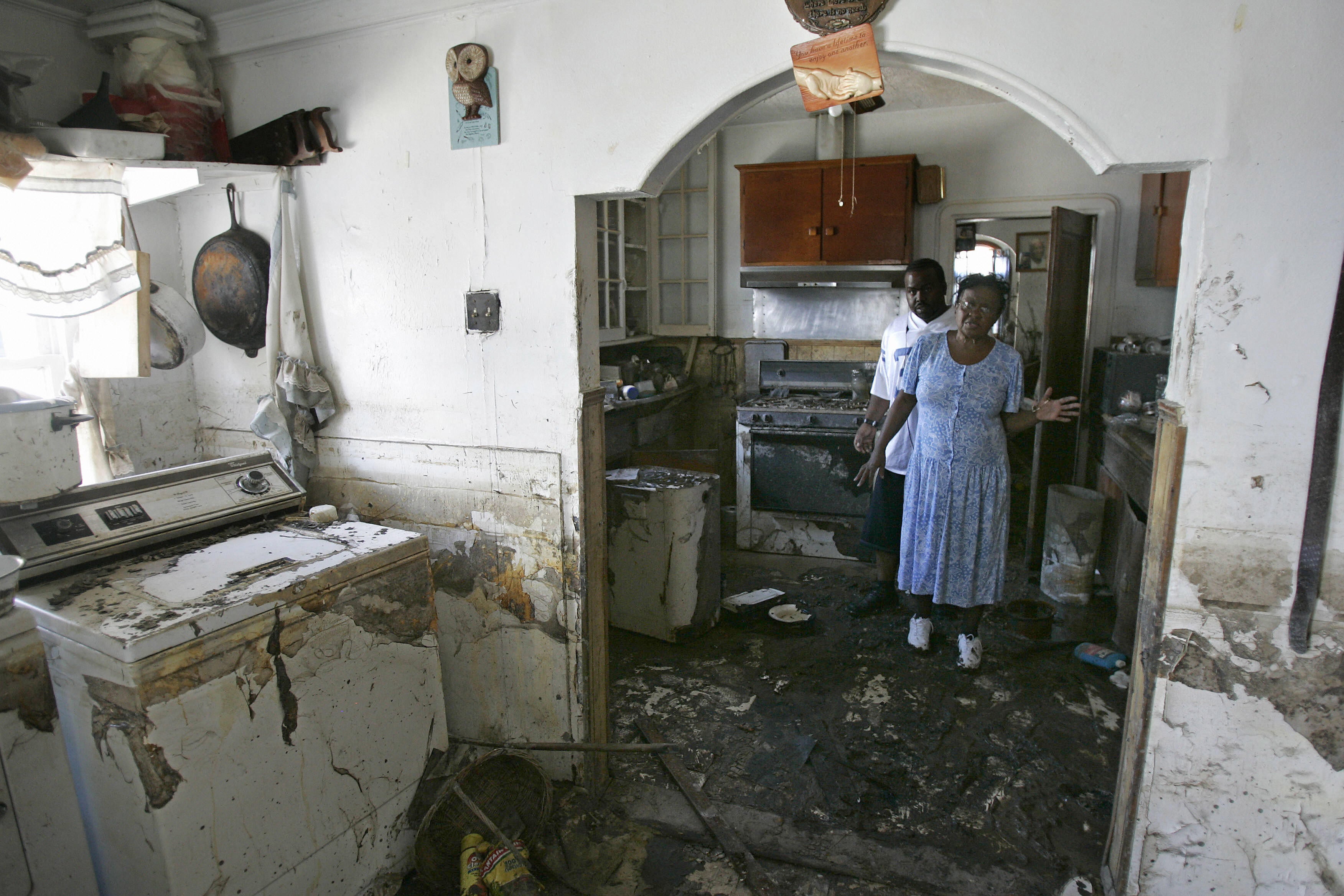

In the meantime, the stranded residents suffered from heat, hunger, and a lack of medical care. Frustration mounted as it took up to two days for a full-scale relief effort to begin. The situation in both places quickly deteriorated, as food and water ran low and conditions became unsanitary. Tens of thousands of people sought shelter in the New Orleans Convention Center and the Louisiana Superdome. Soon, 80 percent of the city was flooded up to the rooftops of many homes and small buildings. The surges overwhelmed the levees that protected New Orleans, located at six feet below sea level, from Lake Pontchartrain and the Mississippi River. Katrina caused record storm surges all along the Mississippi Gulf Coast. The storm brought sustained winds of 145 miles per hour, which cut power lines and destroyed homes, even turning cars into projectile missiles. But an estimated 150,000 people, who either did not want to or did not have the resources to leave, ignored the order and stayed behind. New Orleans Mayor Ray Nagin ordered a mandatory evacuation of the city on August 28, when Katrina briefly achieved Category 5 status and the National Weather Service predicted “devastating” damage to the area. In addition to bringing devastation to the New Orleans area, the hurricane caused damage along the coasts of Mississippi and Alabama, as well as other parts of Louisiana. The levee and flood wall failures caused widespread flooding.Īfter briefly coming ashore in southern Florida on August 25 as a Category 1 hurricane, Katrina gained strength before slamming into the Gulf Coast on August 29. In the wake of the storm, there were over 50 failures of the levees and flood walls around New Orleans and its suburbs. Despite being only the third most powerful storm of the 2005 hurricane season, Katrina was among the worst natural disasters in the history of the United States. Efforts to gentrify neighborhoods in order to promote a new post-Katrina economy left the city’s lower-income residents without the means to return.Hurricane Katrina makes landfall near New Orleans, Louisiana, as a Category 3 hurricane on August 29, 2005. Consequently, the lack of affordable development, the renovation of rental properties, and the demolition of several public housing projects meant that many displaced residents remained without homes. In New Orleans, urban renewal projects were implemented in the years following the storm in an attempt to revitalize the shrinking city and jumpstart the economy, as much of the loss occurred in the housing sector. This was the first time in the country’s history that the national average gas price exceeded $3. As a result, Louisiana refineries began to halt production, and gas prices across the countries rapidly increased in the weeks following Katrina. 20 offshore rigs sustained significant damage by either sinking or running adrift. oil production, as 24% of the country's natural gas supply is housed in or around areas impacted by the storm. Katrina impacted up to 19% of the total U.S. The storm’s economic effects were also felt by the country at large. In New Orleans alone, an estimated 95,000 individuals lost their jobs in the 10 months following the hurricane, accounting for $2.9 billion in lost wages. This number does not account for the additional costs associated with the economic fallout of the storm, which includes the loss of homes and jobs, as well as the interruption of the export industry, the tourism industry, oil production and supply, and tax collection. Hurricane Katrina is tied as the costliest hurricane to have ever hit the United States, with $125 billion in damages.


 0 kommentar(er)
0 kommentar(er)
